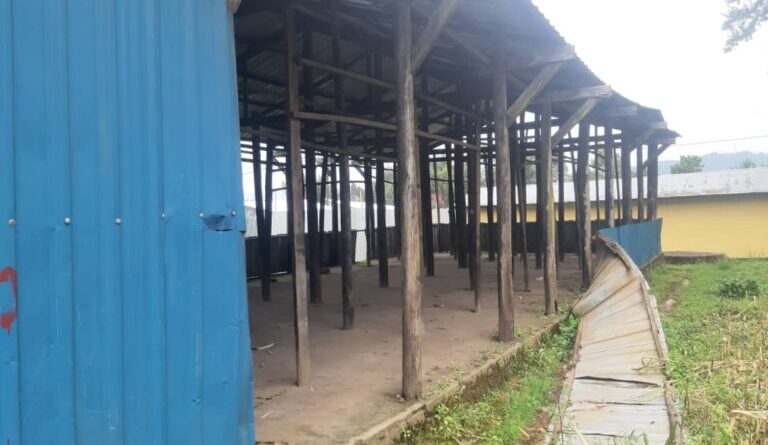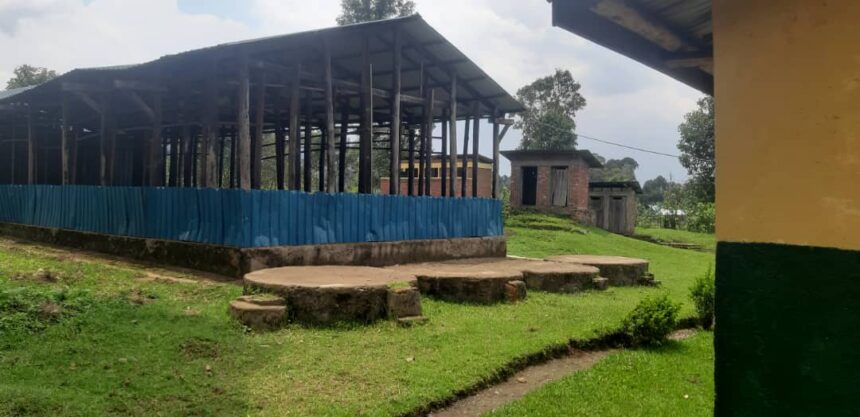Rwanda: Who will be held accountable for the costly grain drying facility project left to waste?
Grain drying and storage facilities were constructed across the country, especially in areas with high agricultural output of cereals, in a large-scale project that consumed a substantial budget. Yet, some of these structures are beginning to deteriorate without ever being used for their intended purpose.
This project began in 2010, launched by the Rwandan government through the Ministry of Agriculture and Animal Resources. It involved building hangar-like structures to serve as spaces for drying and storing various grains, with the goal of better preserving agricultural produce.
However, locals near these facilities claim the project was poorly planned, as many of the structures sit unused and are falling into disrepair despite the considerable funds invested.
Sekabanza, a resident of Kabyiniro Village in Cyanika Sector, Burera District, is one of the locals who spoke with journalists, confirming that the structures have been of no use to them.
“We saw them building these houses and were told they would be for storage and drying. I don’t know what happened, but since they were built, I’ve never seen them used, and now they’re starting to fall apart due to lack of maintenance,” he said.
Sekabanza’s sentiments are echoed by others in the community, who add that the government should take steps to protect these structures.
Florence Ahishakiye said, “These hangars seem like a poorly thought-out project, as they’re not benefiting the intended beneficiaries. I hope the government reevaluates this project because I’ve also heard that some of these buildings have even collapsed on people, leading to fatalities.”
In a letter from Umurengezi, the news outlet that provided much of this information, the Ministry of Agriculture and Animal Resources (MINAGRI) was asked for further clarification on the project on October 31, 2022. The Ministry responded on December 5 through its spokesperson, offering a detailed account of the project, which includes having transferred ownership of the buildings to agricultural cooperatives and private individuals through binding agreements.
The Ministry said: “This project aimed to add value to agricultural production. It began in 2010, and today we count 886 drying facilities built nationwide, which cost the government RWF 10 billion. Upon completion, we handed them over to cooperatives and individuals, following agreements for mutual operation.”
The Ministry also urged local authorities to work closely with farmers to safeguard these achievements.
“The local authorities are the government’s eyes and ears close to farmers. We urge them to keep working with farmers to maintain the infrastructure built across the country. The government invests heavily in such projects, yet some facilities go unused and fall into disrepair. In the worst cases, they’ve caused fatalities, as seen in Gasabo District, where a decayed drying facility recently claimed the lives of 11 people and injured 35 others.”
MINAGRI’s Questions and Answers
Q: When did the project begin, what were its objectives, and what was the per-unit cost (specific figures)?
A: Efforts to improve produce preservation began intensively in 2010 when the Rwandan government, through various projects, increased storage facilities for cereal crops (mainly maize and rice). Between 2019 and 2021 alone, over RWF 10 billion was allocated for building maize drying facilities and rice drying platforms to safeguard and enhance produce quality. During this period, 660 drying facilities and 12 stock facilities were constructed.
Q: Given that these facilities are present in some parts of the country but not others, is the project complete, or is it ongoing? Please provide an overview of the project.
A: Storage facilities have been built across the country, though their distribution varies depending on the primary crop and volume of produce in each area. The government’s plan is to continue developing the country’s storage capacity by adding facilities wherever they’re needed as resources become available, training farmers on produce preservation, and encouraging private sector partnership with the government.
Q: To what extent have the project’s goals been achieved, and were there any challenges faced that may have hindered success?
A: Overall, the project’s goals of enhancing produce preservation have gradually been met. Nationwide, there are now approximately 886 maize drying facilities, including over 700 built between 2014 and 2021, as well as 567 rice drying platforms. These facilities and related infrastructure, like warehouses and drying machines, have helped improve both the quantity and quality of agricultural produce reaching the market.
Q: Who are the intended beneficiaries of these buildings, and who is responsible for their management, especially in cases where they’re deteriorating or being misused? Some residents even report that they’ve turned into hubs of illicit activities.
A: These facilities were intended primarily for cooperatives and individual farmers engaged in cultivating and processing cereal crops. The main beneficiaries are maize, bean, and rice farmers. Cooperatives are responsible for managing the facilities under agreements made after the buildings were handed over, which outline the beneficiaries’ duties for proper usage, maintenance, and the government’s advisory role to prevent unauthorized sale and ensure the facilities remain assets for agricultural development.
Q: Some farmers are concerned about the safety of their produce in these facilities. What assurances can you provide?
A: Facility users are encouraged to establish security measures for their produce and coordinate with local government authorities. There’s no need for safety concerns as long as these measures are in place, agreed upon by all parties.
Q: Finally, what message do you have for the community and local authorities regarding these facilities and future agricultural projects?
A: Projects like this are designed to boost agriculture and overall national development. Proper produce preservation helps protect the effort invested in enhancing crop production by reducing post-harvest losses and improving the quality of produce on the market. Therefore, local authorities, as the government’s close partners, should remain focused on efficiently utilizing and preserving achievements in agriculture. Efforts must be ongoing to increase productivity, preservation, and wise use of any infrastructure provided to support these goals.
Greenafrica


